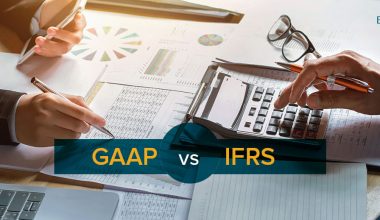Accurately recording revenues and losses on balance sheets is crucial for organizations. The capital account is one of many accounts included on a balance sheet that is essential for keeping track of a company’s financial situation. You can improve your ability to manage a company’s finances by becoming more knowledgeable about capital accounts and how they function. Therefore, this post will expose to you the types of partnerships in the capital account and details on the LLC working account.
Capital Account
A capital account is a ledger that keeps track of any capital a shareholder or owner contributes to the business as well as their earnings from it. Retained earnings are also tracked from one accounting period to the next. Retained earnings are the sum of money that is left over after paying expenses when you balance a company’s books. In order to maintain an exact and current record of their earnings, businesses frequently transfer this money to their capital account.
Companies frequently include information on their capital accounts at the bottom of their balance sheets. This portion of the balance sheet may refer to this account as the owner’s equity if a business is a single proprietorship, which means that only one person owns it. This account may be referred to as the shareholders’ equity on the balance sheet if the business is a corporation, which means a number of shareholders own it. Companies deduct shareholder dividends, or the shareholders’ share of earnings, from shareholders’ equity before computing retained earnings.
How Does A Capital Account Work?
Using a spreadsheet or particular accounting software where you record all business activities, you can set up a capital account. For a precise account balance, it’s critical to keep track of all receipts and payments. Another choice is to put an owner’s investments in the business to a capital account part of the balance sheet.
Examples of Capital Accounts
Here are three instances of capital accounts being used in various organizations:
- Sole proprietorship: A sole proprietor is the legal owner of the company.
- Partnerships and LLCs: When several people invest their cash and jointly manage a business, there are often separate capital accounts for each partner. Based on their partnership agreement, they frequently divided the retained earnings between the capital accounts.
- Shareholders: Shareholders purchase ownership in a firm and are paid dividends in proportion to their shareholdings.
Benefits of Capital Accounts
A capital account can be used to track any owner investments as well as quantify the revenue a business generates within a budgetary period. Here are several scenarios in which you might find this information useful:
#1. Obtaining Bank Loans
You can apply for a business loan if you want to launch a business. To ensure you have a financial stake in the company and determine your ability to repay the loan, a bank may request to see the investments you’ve made in it before granting you a loan.
#2. Tax Payment
Owners of private businesses without shareholder ownership often pay taxes on the earnings they make. Then they can deduct them from their individual tax returns. To determine the correct amount of taxes they must pay each year, business owners must keep track of their revenues and losses in a capital account.
#3. Tracking Contributions
Use a capital account to keep track of each partner’s involvement in the beginning stages of a partnership, such as capital contributions or early investments. Owners commonly attribute a monetary value to a specific property when making a gift, and they then add that value to the capital gains account to reflect that value.
What Are Two Types of Capital Accounts?
Knowing the different types of capital accounts is essential after learning the capital account definition. In a partnership firm, there are typically two ways to manage a capital account. Below are further details about the two types of capital accounts:
#1. Fixed Capital Account
A company organization maintains two types of accounts for this type of capital account. Different kinds of transactions involving the capital of the partners are shown in both of these accounts. Current accounts and capital accounts are the two types of accounts established as a result. You must explicitly state this type of account in the partnership agreement if you intend to display a fixed capital account because it is a constant account type.
#2. Fluctuating Capital Account
All partners’ capital fluctuates in this sort of capital account. It only shows one account, in contrast to fixed capital accounts. No one is required to highlight this information in the partnership deed.
Capital Account LLC
Individual accounts for each person’s investment in an LLC are known as capital accounts. These accounts keep track of the first members’ capital contributions and make changes for later contributions.
There are several ways to raise a capital account’s balance.
- Initial sunk cost.
- Further contributions.
- A cut of the profits.
There are several ways to reduce the capital account balance.
- A member’s share of losses.
- Withdrawals made for private use.
After any liabilities payments of the LLC are made, the capital account is returned to the individual members when an LLC is dissolved. Priority is given to which members receive this money. Bank accounts and capital accounts are not the same thing. Members are not required to maintain a separate bank account from the LLC capital account.
How Do LLC Capital Accounts Work?
Because these types of companies offer limited responsibility for the owners, a lot of business owners prefer LLCs. Each member of the LLC has a capital account, and each member should be completely familiar with the account’s fundamentals. A person’s ownership is determined by the initial contribution he or she makes. On the members’ ownership and investment, “running totals” are maintained.
CA are occasionally revised, either upwards or downward. These changes represent company gains or losses in accordance with each member’s shareholding and the provisions of the operating agreement.
Creating a Capital Account
This kind of account can be made by your company with:
- Accounting programs
- A worksheet
- Added accounting program
The accountant or bookkeeper of the business establishes a capital account and keeps a record of each shareholder’s financial transactions.
How Much Should Members Contribute to Capital Accounts?
Until the LLC’s earnings are sufficient to support the business’s regular expenses, the amount each member contributes should cover the LLC’s initial expenses. Credits to members’ capital accounts should reflect any further contributions that are necessary, if any. A corporation’s LLC may be ignored and its members may be held personally accountable for the debts and liabilities of the company if it lacks sufficient capital. It may be required to make bigger capital contributions for LLCs that have significant risks or liabilities.
#1. Profits and Losses
Profits and losses have an impact on capital accounts in addition to the firm as a whole. In essence, if a member has shares in the LLC, those shares will rise in value with profits and fall with losses. The operating agreement needs to be very detailed about these shares.
#2. Liquidating Distribution
When an LLC dissolves, the state mandates that all of its debts must be settled before any funds are transferred to members. The sums distributed to all members upon the dissolution of an LLC are known as final distributions. Once all of the company’s debts have been paid, any remaining funds can be distributed to the members.
Final or liquidation distributions shall be handled in accordance with the terms of the Operating Agreement. If liquidation payouts aren’t covered under the agreement, the state has rules in place to control the procedure.
Capital Account in a Partnership
A partnership capital account is a record of all financial interactions between the partners and the partnership firm, including the initial capital investment, interest on capital, withdrawals, profit-sharing, and other changes. Between the partners and the firm, sufficient responsibility and openness must be maintained. Both an oral and formal partnership agreement is acceptable. Profit-sharing arrangements may also be jointly agreed upon or based on capital contributions.
The partnership firm’s accounts are different from those of a proprietorship. Additionally, it includes the partners’ capital account, where all transactions between the company and the partners as well as the capital contributions made by partners have to be documented. The capital account of the partner can be either current capital or fixed capital. If an account is designated as a fixed CA, only the capital contribution should be credited; all other transactions should be recorded in the current account.
Best Practices for Partnership Capital Accounts
With a supporting schedule that divides out the capital account for each member, a partnership can keep a single partnership capital account for all partners. However, keeping separate capital accounts for each partner within the accounting system is simpler over the long run. This makes it simpler to calculate the amount that should be distributed to each partner in the event of a business liquidation or a partner’s departure, which in turn decreases the amount of debate over payments and liabilities among the partners.
Working Capital Account
The business’s net working capital is the sum that remains after subtracting current liabilities from current assets. The indicator of a venture’s liquidity is working capital. Additionally, it indicates how effectively a venture operates. The short-term financial health of the company is better the better the working capital is.
The Idea of a Working Capital Account
The idea of working capital is straightforward. It is the portion of total capital a company utilizes to pay for its ongoing expenses and is regarded as the most movable. Net Working Capital (NWC) is another name for working capital.
This is obtained by comparing the balance sheet’s assets and liabilities. The resulting disparity is referred to as the company’s working capital.
- The gap between a venture’s current assets and liabilities is the venture’s working capital. It is also known as the company’s net working capital or NWC.
- The company’s liquidity is estimated by Net Working Capital (NWC).
- It evaluates the company’s immediate financial situation.
- If the proportion of current assets to current liabilities is lower than one, the company’s net working capital is deemed to be negative. To put it another way, the ratio should be one or above to represent a positive working capital position.
- A healthy Net Working Capital, or NWC, demonstrates the company’s ability to finance both present and future operations. It is a sign of corporate expansion and growth as well.
- Always strive for equilibrium. As a result, a very high Net Working Capital may point to excessive inventory, which is bad for a company.
The following formula can be used to determine working capital:
Work capital (WC) = current assets divided by current liabilities.
The Net Working Capital, or NWC, displays the cash that is currently on hand to cover operating costs or daily expenses.
The following formula can be used to determine a business’s Net Working Capital:
Current assets – Current Liabilities = NWC (net working capital).
Which Type of Account Is a Capital Account?
A capital account is a natural person’s account or an account of an individual who is living. As a result, it qualifies as a personal account.
What Are Capital Accounts on a Balance Sheet?
The CA in accounting displays the net worth of a company at a particular point in time.
What Is the Difference Between a Financial Account and a Capital Account?
The CA tracks capital transactions between citizens of the United States and citizens of other countries. An increase or reduction in a country’s ownership of foreign assets is shown in the financial account.
Is Capital an Asset or Equity?
Equities, which also include other assets like treasury shares and real estate, fall under the category of capital.
Related Posts
- PARTNERSHIP BUSINESS: Definition, How It Works, Pros & Cons
- AFFILIATE PARTNERSHIP: Definition, Examples, and Agreement Templates
- WORKING CAPITAL LOANS: Documents, Examples, and How to Get Funding for Working Capital
- CAPITAL IN BUSINESS: Definition, Types, Examples & How It Is Used
- General Partnership Definition: Taxes, Liability & Agreement






